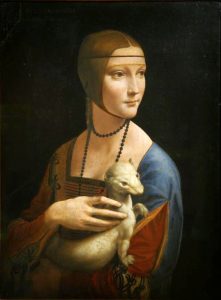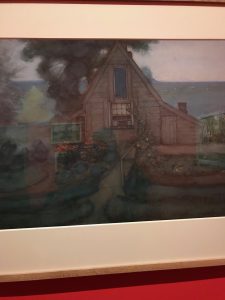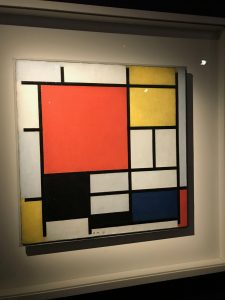The Art in STEAM, and the Science, Technology, Engineering and Math in Art
By Martha Sessums, President, ACE
Science and Art can be a team. That was obvious in two art exhibits I saw recently. Leonardo da Vinci used science and the study of nature as inspiration for his art and painting style. Piet Mondrian, the abstract painter of the 20th century, was inspired by geometric form that would become his style – even in his early paintings.
The educational trend to add Art into the Science, Technology, Engineering, Math (STEM) focus so it becomes STEAM makes sense to me. I’m not an educator and will never claim to be. I leave that to the amazing educators that run the ACE Learning Centers. But I have visited the schools and ACE Learning Centers, talked to students, teachers, program managers and principals, and have seen that to capture the imagination, interest and hope of a student to succeed beyond her or his dreams, it takes more than appealing to the techie side. There’s the human art side in everyone and that can be the entry and inspiration on a journey to success.
The Leonardo exhibit at the Louvre in Paris focused on the artist’s scientific side. He was driven to explore a new way to find and paint “the truth of form” which he felt was constantly moving. To understand and convey movement, Leonardo questioned the physical world and looked beneath the surface for how movement happened. The result was extensive notes, studies and experiments on how humans are built and move, from bone and muscle structure to flight. He needed an understanding of movement via the laws that govern it which he regarded as fundamentally mathematical in nature.
The exhibit had a whole room of his notebooks, drawings and sketches of humans and the math and science of movement. His notes included studies using geometry, science, anatomy, botany, architecture, mathematics and a host more to create inventions of movement such as flying machines, solar power and even military tanks.
Science also gave the artist the freedom and insight to master shade, light, space and that movement he was looking for with his invention of the sfumato oil painting technique. Colors and tone are blended in such a subtle manner that transitions and edges are imperceptible. This became Leonardo’s masterpiece style of painting. His genius “truth of form.” Leonardo brought Science to Art.
Piet Mondrian’s journey from figurative painter to abstract artist filling canvases using shape, form, lines and color was on display at the Musée Marmottan Monet. He started out painting scenes of barns and windmills, but even then there was obvious emphasis on geometry in the form of these buildings. Mondrian brought Art to Science.
Much of his art inspiration was in his search “to capture the very essence of nature and not merely our perception of it.” Ultimately, he distanced himself from the figurative, naturalist styles and colors and focused on pure, bright and strongly contrasting colors (red, blue, yellow, black, white) displayed in balanced geometric shapes and planes.
The horizontal and vertical lines were drawn not using geometry’s ruler and protractor but by what he called “high intuition.” The result was a harmony and rhythm which he considered the “basic forms of beauty…(which) can become a work of art, as strong as it is true.”
My artist friend Jeannie Crockett said, “Mondrian’s work is so balanced. If you removed a line or a square, the balance would fall apart. It would not work.”
Mondrian’s style has even inspired fashion. Yves Saint Laurent designed shift dresses with blocks of primary colors bordered in black for his Fall 1965 collection. It was so popular it inspired coats, boots and more.
Art is actually a part of many student’s journeys. The walls of Oakland International High School and San Francisco International High School are covered with student art that tells stories of immigrant journeys. KALW’s Audio Academy is focused on the art of telling stories out loud. The Alpha Parent Center uses pictures as a tool to help English learners explain what they see.
There is Art in STEM. There is STEM in Art. Leonardo and Mondrian are examples of how their use of Science and Art became a team that can inspire many a journey.




Great post about “Art in Science” and “Science in Art”